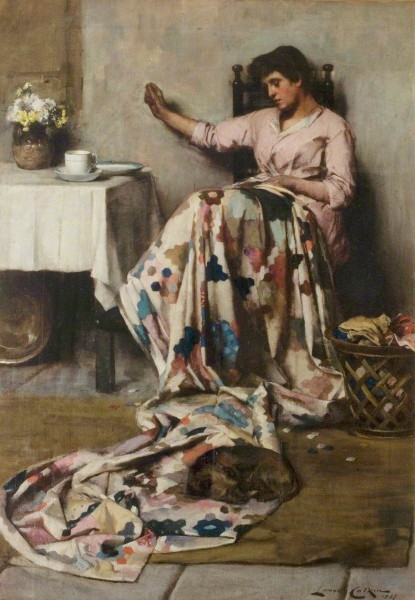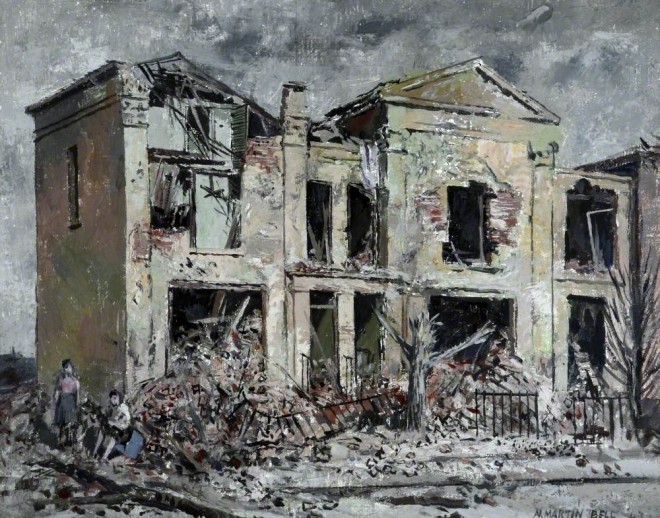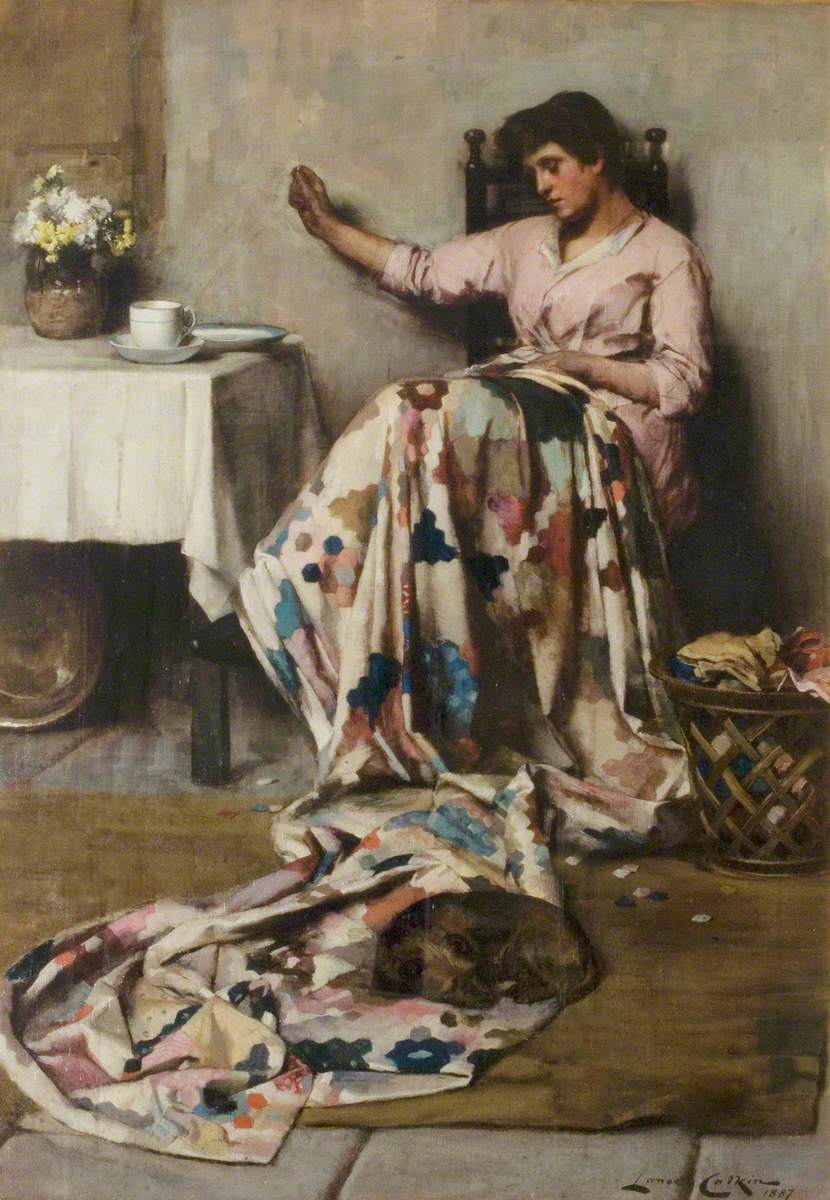A month ago, modestly eschewing Proust, I thought that the answer to lockdown reading was total immersion: nothing shorter than six hundred pages. As we enter week 6 a different reality has hit. The ‘holiday reading’ plan was ill-conceived. A myriad of small un-foreseen tasks fill the day, shopping strategies have replaced simple lists, every meal must be prepared, eaten and tidied away, and the housework – How to Run Your Home Without Help (Persephone Book No. 62) should be flying off the shelves. Far from dragging, the days are shrinking, and so is the attention span. I am finding greater solace in short stories. The plan for the Forum is that we should write about Persephone Books in order of publication. But this month the Country Cousin is diverging. The Second Persephone Book of Short Stories was quite simply too tempting.
At the Persephone Bookshop in September 2018, to the usual tightly packed audience (how long ago that seems), Philip Hensher enthused about the short stories of Malachi Whitaker. In his preface to The Journey Home and Other Stories (Persephone Book No. 124), he had written of her intense, scrupulous gaze, under which ‘the event that happens all the time and the event that is happening only once are, in the logic of art, strangely identical.’ Describing Whitaker’s particular style earlier in his introduction to The Penguin Book of the British Short Story 2, he made particular note in her writing of ‘an exquisitely withdrawn and precise vein, often claimed by women writers.’ Hensher uses the phrase ‘withdrawn exactitudes’. Vita Sackville-West praised Whitaker’s ‘determination to make each word do the duty required of it’. In the preface to The Woman Novelist and Other Stories (Persephone Book No. 64) Claire Gardner, the author’s niece, quotes Walter Allen’s 1946 review in the Spectator, in which he praises ‘the simplicity, exactness and quietness of her style’, adding that ‘she knows the value of understatement’. The central character in Carol Shields’ ‘Accidents’, the penultimate story in The Second Persephone Book of Short Stories, an abridger, defines his craft: ‘One must have a sharp eye for turning points and seismic sensitivity for the fragile, indeed invisible tissue, that links one event with another.’ All ground rules for the genre.

Arts Council Collection
Persephone Books has published twelve collections of short stories by individual writers, and two anthologies. Interestingly, Philip Hensher considers the mixed anthology to be truer to the nature of the short story than a collection, short stories being written ‘to be read singly and in very varied company’. Turning to the final pages of The Second Persephone Book of Short Stories, which lists where each was originally published – The Yellow Book, The New Yorker, Modern Reading, Liberty, London Calling amongst others – we find that few appeared in ‘single author’ collections. The company here is varied indeed, and perfect for our changing moods. The longest story is just over twenty pages, the shortest only four. Time frames range widely, from half a lifetime, to the length of a train journey, or the duration of a shower of rain. Many are melancholy, some deeply sad, others optimistic, some bring a definite smile to the lips. Some end with a twist, others leave us wondering what will happen, and in some cases uncertain what has happened.
Twelve of the stories are taken from volumes by individual authors published by Persephone, nine from the Persephone Quarterly (later Biannually) and nine have been selected especially for this anthology. We might choose to turn first to old friends, Dorothy Whipple, Mollie Panter-Downes, and, like children seeking the comfort of a familiar bed-time story, ask them to tell us once more the one about the triumph of the exploited daughter, whose mother ‘was devoted to the care of herself and expected the same devotion from Christine’, or the one about the family gathered to make arrangements for their old mother. ‘Vestiges of everyone’s interrupted everyday business seemed to have trailed into the room with them. Grasping handbags or gloves, they sat forward in their chairs like strangers brought together in a railway waiting room by some accident on the line.’ We know them almost by heart, but there is a special pleasure in getting them, as it were, note perfect. Some we return to, recalling how they made us smile. The wildly imaginative three-year-old Britta (‘I aren’t Britta … I’m a bull’), in ‘The Professor’s Daughter’ by Margaret Bonham, never fails to charm, not least when she tears the invisible wings from the spectral flower fairy dreamt up by her tiresomely innocent new ‘minder’, announcing grimly ‘I’ve killed it’, before setting off with an imaginary, but nonetheless awkward, bicycle. Others like Malachi Whitaker’s ‘Thunder Shower’, Elizabeth Berridge’s ‘The Prisoner’ or Frances Tower’s ‘The Little Willow’, the last two touchingly individual and very different snapshots of wartime loss, we know will make us sad, but sadness may be just the right ‘fit’ for the moment.
Social distancing is not only keeping us from our families and our friends, it has put a stop to the pleasure of fresh encounters. An anthology offers us the reading equivalent, and it’s a joy. What better way to meet a previously unknown author, or become better acquainted with one known to us only for her novels, and seen in a fresh guise. Sally Benson and Kathleen Warren were two names new to me: their two very short stories ‘Going Home’, and ‘To Open a Door’, draw us in, hold our attention, stir a sense of unease, only to turn our expectations upside down in the last line, and we understand that we have been party to a pivotal moment. Perfect.

Nottingham City Museums and Galleries
Persephone novelists Dorothy Canfield Fisher (The Home-Maker Persephone Book No. 7) and Joanna Cannan (Princes in the Land Persephone Book No. 63), narrow their focus to small but significant incidents in the lives of individual women. ‘The Bedquilt’ tenderly tracks the years it takes an overworked, unmarried, poor relation in rural New England to complete the perfect patchwork. ‘The Exile’ features another, spinster aunt ( something of a stock character until the 1950s), prosperous in this case, rich enough to travel to China to learn the fate of a long lost but much talked of uncle. Two brilliant stories which surprise the reader in different ways.
Philip Hensher has pointed out that writing time plus the logistics of publication make it impossible for novels to cover contemporary events: some literary editors are already asking when we can expect the first Covid-19 novel.The short story, on the other hand, being quicker, can ‘more reliably speak to participants in a current situation.’ It wasn’t until 1947 that the first war novels began to appear. The first of Mollie Panter-Downes wartime stories was published in The New Yorker a fortnight after war broke out. Of the thirty stories, first published between 1896 and 1984, six were published during the war years, and there is a compelling immediacy in the detail and the rawness of the pain. In the opening pages of ‘Miss Anstruther’s Letters’ Rose Macaulay shows the aftermath of a night of bombing more vividly than any photograph or newsreel. ‘ … The massed debris on the basement floor, where piles of burnt, soaked and blackened fragments had fallen through four floors to lie in indistinguishable anonymity together. The tenant of the basement flat spent her days there, sorting and burrowing among the chaotic mass that had invaded her home from the dwellings of her co-tenants above.’

Walker Art Gallery
Writing a year ago about Every Good Deed and Other Stories (Persephone Book No. 118), I marvelled at Dorothy Whipple’s ear, pricked for the telling snippet of conversation, for her eye permanently focused on people around her, comparing her to a photographer never without her camera, ready to capture the hidden story. I suggested that we might for a while, having read the stories, find ourselves noticing the sad face at the bus stop, the cumbersome package, the anxious smile. The unexpected upside of lockdown life is that with so few people in the streets, and so little urgency in life, there is space and time to register small incidents and ask what lies behind them. What can be troubling the angry woman in the queue? Why is a middle-aged man swearing at the pet shop owner while urgently signalling to his wife to decide between two squeeky dog toys? Who is the lone passenger on a double decker bus in the middle of the day? But sadly our imagination and narrative skills fail us. So we turn back to those who do it so well.
